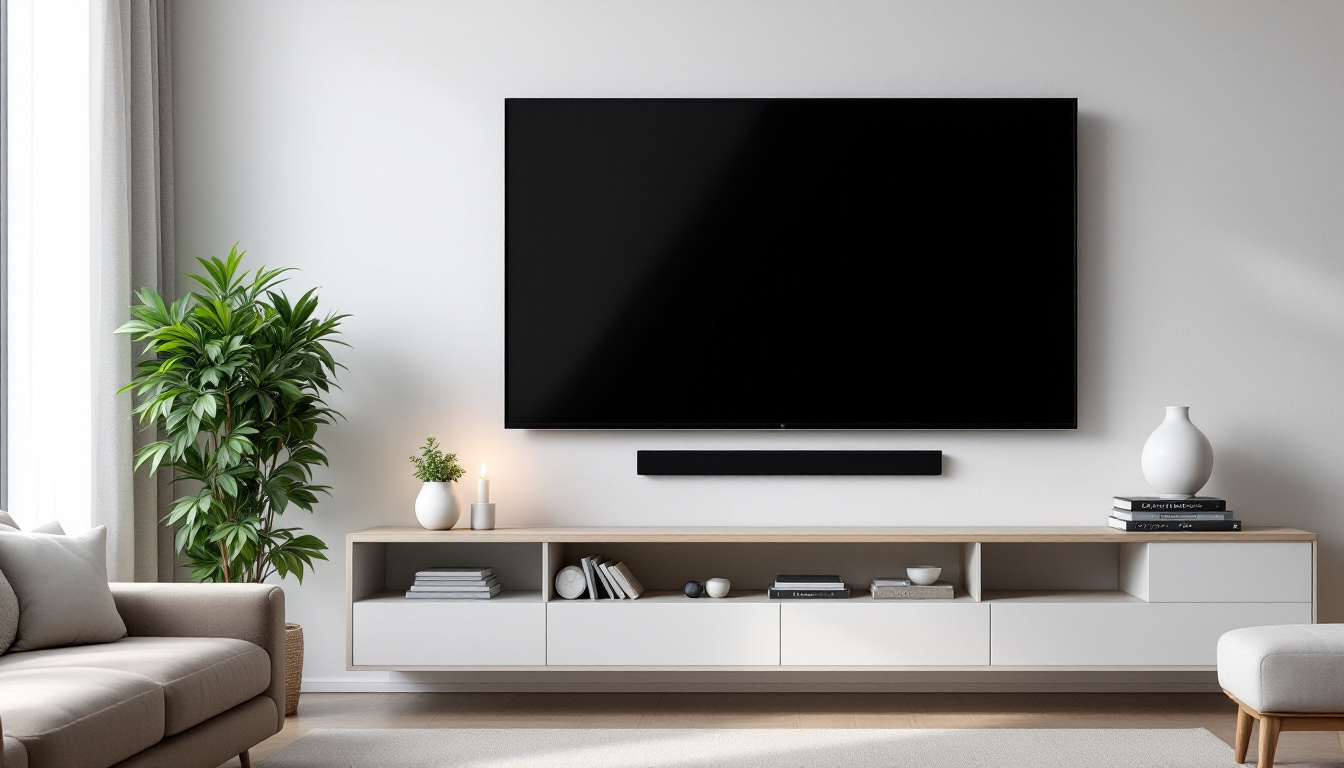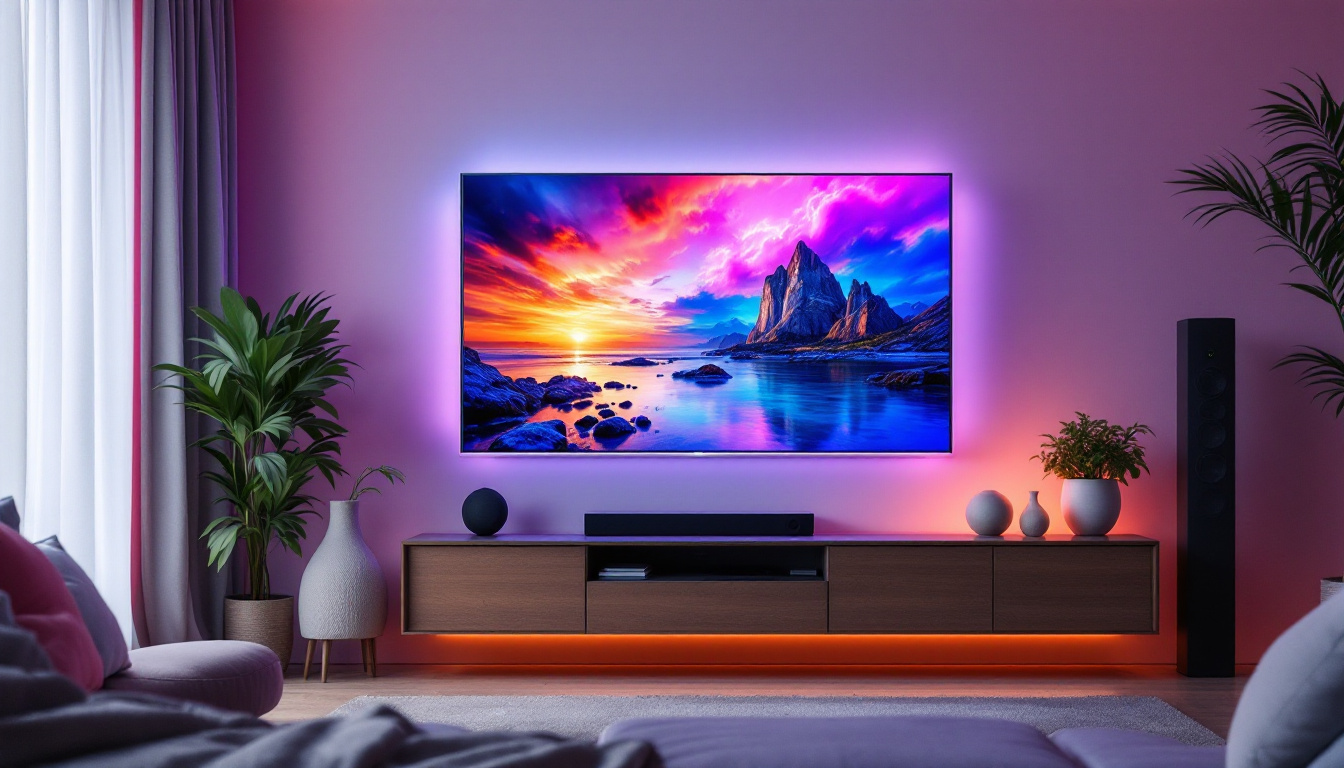Understanding how to measure the diagonal of a rectangle is crucial for various applications, including the design and installation of LED displays. This article delves into the mathematical principles behind measuring diagonals, the significance of these measurements in LED display technology, and practical applications in real-world scenarios.
Understanding the Basics of a Rectangle
A rectangle is a four-sided polygon (quadrilateral) where each angle is a right angle (90 degrees). The opposite sides are equal in length. The two dimensions that define a rectangle are its length and width. These dimensions are essential not only for calculating the area and perimeter but also for determining the diagonal length. Rectangles are ubiquitous in our daily lives, appearing in everything from the design of buildings and furniture to the layout of digital screens and paper sizes. Their simple yet effective geometric properties make them a fundamental shape in both mathematics and practical applications.
Mathematical Representation
The formula to calculate the diagonal (\(d\)) of a rectangle can be derived using the Pythagorean theorem. If \(l\) represents the length and \(w\) represents the width, the diagonal can be calculated as:
d = √(l² + w²)
This formula illustrates that the diagonal is the hypotenuse of a right triangle formed by the length and width of the rectangle. Understanding this relationship is vital for various applications, including the placement and sizing of LED displays. Additionally, this mathematical representation is not limited to rectangles alone; it can also be applied to squares, which are a special type of rectangle where all sides are equal. This versatility makes it a crucial concept in geometry.
Importance of Diagonal Measurement
Measuring the diagonal of a rectangle is not merely an academic exercise; it has practical implications in design and engineering. For instance, when designing an LED display, knowing the diagonal measurement helps in selecting the appropriate screen size for a given space. This ensures that the display is not only aesthetically pleasing but also functional. Furthermore, in architectural design, the diagonal measurement can influence the structural integrity of a building, as it helps architects ensure that walls are straight and corners are correctly aligned. The diagonal also plays a significant role in optimizing the use of space, allowing for better layouts in both residential and commercial environments.
Moreover, the concept of diagonal measurement extends beyond physical objects. In digital design, understanding the diagonal of a rectangle can help graphic designers create visually balanced layouts, ensuring that elements are proportionally spaced and aligned. This is particularly important in web design, where user experience is enhanced by intuitive navigation and appealing aesthetics. By grasping the significance of diagonal measurements, designers and engineers can make informed decisions that enhance functionality and visual appeal across various disciplines.
Measuring the Diagonal: Step-by-Step Guide
Measuring the diagonal of a rectangle can be done with a few simple steps. Whether using a measuring tape or a digital tool, the process remains straightforward. Below is a step-by-step guide to accurately measure the diagonal of a rectangle.
Step 1: Gather Necessary Tools
To measure the diagonal, you will need a measuring tape or a ruler. If precision is paramount, consider using a laser measuring tool, which can provide accurate measurements without the need for physical contact. Additionally, having a calculator on hand can simplify the calculations, especially if you are working with larger dimensions or need to convert units.
Step 2: Measure Length and Width
Begin by measuring the length and width of the rectangle. Ensure that the measuring tool is straight and aligned with the edges of the rectangle for an accurate reading. Record these measurements for the next step. It’s also beneficial to double-check your measurements by taking them from different points along the edges, as this can help account for any irregularities in the shape of the rectangle, especially in older structures or custom-made furniture.
Step 3: Calculate the Diagonal
Using the measurements obtained, apply the diagonal formula mentioned earlier. For example, if the length is 6 meters and the width is 8 meters, the calculation would be:
d = √(6² + 8²) = √(36 + 64) = √100 = 10 meters
This calculated diagonal length can now be used for various applications, including determining the size of an LED display that fits within the rectangle. Furthermore, understanding the diagonal measurement can be crucial in design and layout planning, as it helps in visualizing how different elements will fit together in a given space. For instance, when arranging furniture or planning a garden layout, knowing the diagonal can assist in maximizing the use of space while ensuring aesthetic balance.
Application of Diagonal Measurements in LED Displays
In the world of LED displays, understanding diagonal measurements is essential for several reasons. From design considerations to installation logistics, the diagonal length plays a pivotal role in ensuring optimal performance and visual appeal.
Choosing the Right Screen Size
When selecting an LED display for a specific space, the diagonal measurement helps determine the appropriate screen size. Displays are typically marketed by their diagonal size, making it crucial to know this measurement to avoid purchasing a screen that is too large or too small for the intended area.
For instance, in a retail environment, a larger screen may be necessary to attract attention from a distance. Conversely, in a small conference room, a smaller display may suffice. Understanding the diagonal measurement allows for informed decisions that enhance the viewing experience. Additionally, considering the distance from which viewers will be watching the display is important; a general guideline is that the optimal viewing distance should be approximately 1.5 to 2.5 times the diagonal measurement of the screen. This principle helps ensure that the content is easily readable and engaging, regardless of the setting.
Installation Considerations
The diagonal measurement is also vital during the installation of LED displays. It influences the mounting height, angle, and overall positioning of the screen. A display that is too high or at an incorrect angle can lead to poor visibility and viewer discomfort.
Proper installation ensures that the display is easily viewable from various angles and distances, maximizing its effectiveness in communicating messages or displaying content. Therefore, accurate diagonal measurements are integral to a successful installation process. Furthermore, the mounting structure must be robust enough to support the weight and size of the display, which can vary significantly based on the diagonal measurement. This consideration is particularly crucial in high-traffic areas where the display might be subject to vibrations or accidental bumps, ensuring both safety and longevity of the installation.
Aspect Ratio and Content Display
LED displays come in various aspect ratios, which are determined by the relationship between the width and height of the screen. The diagonal measurement plays a crucial role in defining these ratios. A common aspect ratio for LED displays is 16:9, which is widely used in televisions and digital signage.
Understanding the diagonal measurement helps in selecting content that fits well within the display’s dimensions. This ensures that images and videos are not distorted and that the overall presentation remains visually appealing to the audience. Additionally, as media consumption habits evolve, the demand for different aspect ratios is increasing. For example, social media platforms often favor vertical video formats, which may require displays with different dimensions to effectively showcase content. This adaptability in aspect ratios, influenced by diagonal measurements, allows businesses and content creators to cater to diverse audiences and maximize engagement across various platforms.
Real-World Examples of Diagonal Measurement in LED Displays
To illustrate the importance of diagonal measurement in LED displays, consider the following real-world examples. These scenarios highlight how accurate measurements can lead to effective display solutions in various settings.
Retail Environments
In retail spaces, LED displays are often used to showcase products and promotions. For instance, a clothing store may opt for a 55-inch LED screen to display advertisements. Knowing the diagonal measurement ensures that the screen fits perfectly within the allocated space, allowing for optimal visibility and engagement.
Furthermore, the diagonal measurement helps in determining the distance from which customers can view the display effectively. A well-placed screen can significantly enhance customer interaction and drive sales.
Corporate Settings
In corporate environments, LED displays are commonly used for presentations and meetings. A conference room equipped with a 75-inch screen allows for clear visibility of content from various seating positions. Accurate diagonal measurements ensure that the screen is appropriately sized for the room, facilitating effective communication during meetings.
Moreover, understanding the diagonal measurement aids in the selection of presentation materials that are tailored to the display’s dimensions, enhancing the overall effectiveness of the presentation.
Outdoor Advertising
Outdoor LED displays, such as billboards, require careful consideration of diagonal measurements to ensure visibility from a distance. A large billboard with an appropriate diagonal size can attract attention from passing vehicles and pedestrians, making it an effective advertising tool.
In this context, accurate diagonal measurements are essential for determining the optimal placement and height of the display, ensuring that it reaches the intended audience effectively.
Conclusion
Measuring the diagonal of a rectangle is a fundamental skill that has significant implications in the design and installation of LED displays. By understanding the mathematical principles behind diagonal measurements, one can make informed decisions regarding screen sizes, installation logistics, and content display.
From retail environments to corporate settings and outdoor advertising, the importance of accurate diagonal measurements cannot be overstated. These measurements ensure that displays are not only visually appealing but also functionally effective in communicating messages to the audience.
In an age where visual communication is paramount, mastering the art of measuring diagonals can lead to enhanced experiences for both businesses and consumers alike. Whether you are a designer, installer, or end-user, understanding how to measure the diagonal of a rectangle is a valuable skill that can elevate any LED display project.
Discover the Perfect LED Display with LumenMatrix
Ready to take your visual communication to the next level? LumenMatrix offers a comprehensive range of LED display solutions tailored to your needs. Whether you’re looking to enhance your retail space, make an impact in corporate presentations, or captivate passersby with outdoor advertising, our cutting-edge technology is designed to deliver unparalleled clarity and engagement. Don’t just measure the potential of your space—maximize it with our Indoor, Outdoor, Vehicle, Poster, Sports, Floor, Custom, All-in-One, and Transparent LED Displays. Check out LumenMatrix LED Display Solutions today and transform your message into a visually stunning experience that resonates with your audience.































